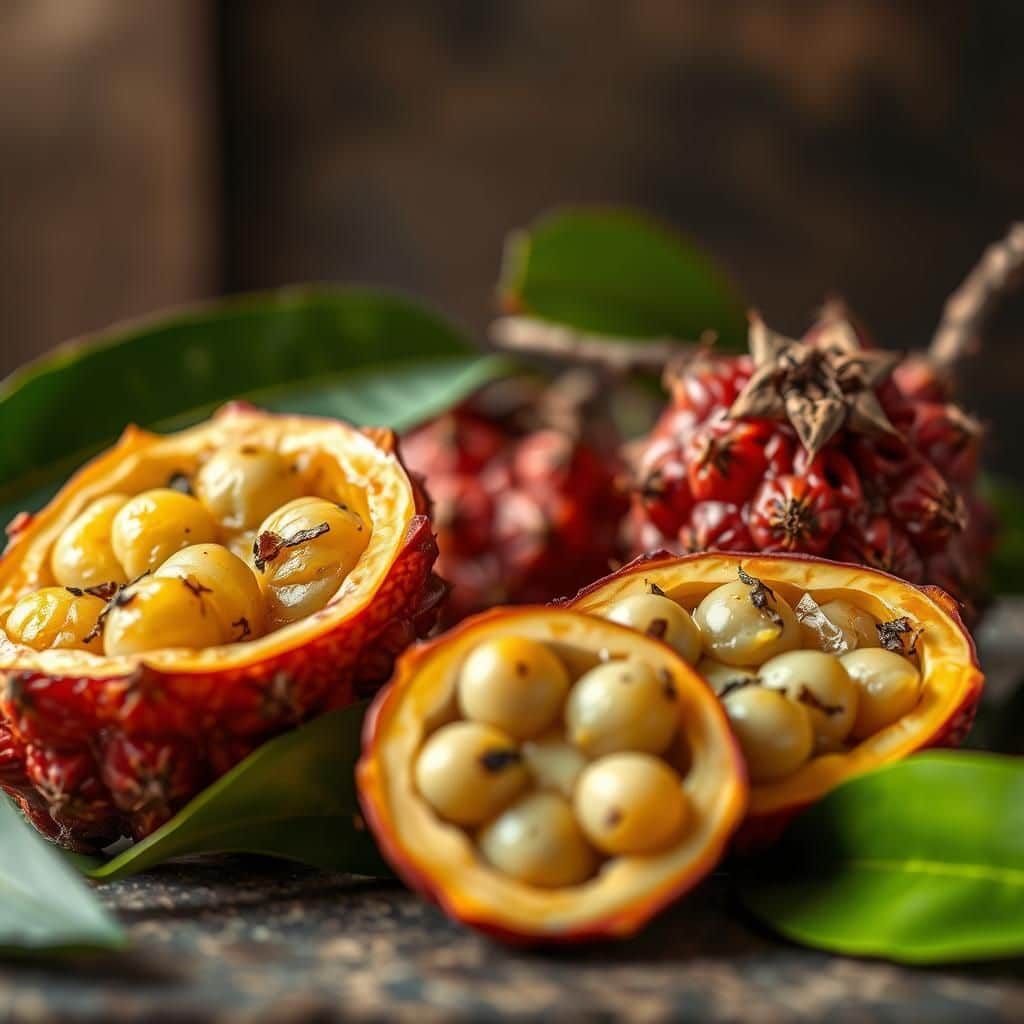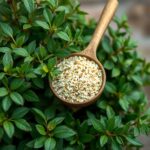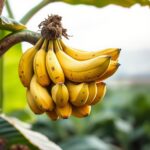What's the Rarest Fruit Ever? Discover the Most Elusive Delicacies in the World!

In the vast realm of the culinary world, certain fruits stand out not only for their flavors but for their rarity. The quest for the rarest fruits takes us on a journey through exotic landscapes, where unique climates nurture extraordinary produce. These elusive delicacies often carry fascinating stories, cultural significance, and sometimes even hefty price tags. From the fleeting seasonality of some varieties to the remote locations where they flourish, this exploration sheds light on nature's hidden gems. Join us as we uncover the most elusive fruits on the planet, each promising a unique taste experience that few have had the privilege to savor.
What Is the Rarest Fruit in the World?
The rarest fruit in the world is commonly considered to be the considered mangosteen, specifically the purple mangosteen. This tropical fruit, native to Southeast Asia, has become increasingly rare due to habitat loss, climate change, and overharvesting practices. The mangosteen is praised for its juicy white flesh and distinct sweet-tangy flavor, making it a sought-after delicacy. However, obtaining this fruit can be challenging as it requires specific growing conditions, which limits its availability in global markets. Additionally, its thriving presence is often confined to the regions where it naturally grows, making it difficult for consumers elsewhere to experience this unique fruit.
Characteristics of the Purple Mangosteen
The purple mangosteen is characterized by its thick, dark purple rind and a sweet, white juicy flesh that is often regarded as one of the most delicious fruits. The fruit is approximately the size of a small orange, and when opened, it reveals segments resembling that of a tangerine. The rind is inedible, but the flesh is not only tasty but also rich in nutrients and antioxidants, contributing to its reputation as a healthful fruit.
Geographical Distribution
The purple mangosteen thrives primarily in Southeast Asia, particularly in countries like Thailand, Malaysia, and Indonesia. It requires a humid tropical climate with well-drained soil to grow effectively. As a result, its cultivation is often restricted to specific regions where these conditions exist, making it difficult to find in markets outside of its native areas. The limited geographical distribution contributes to its rarity, as efforts to cultivate the fruit in other parts of the world have not been highly successful.
Threats to Its Existence
Several factors threaten the existence of the purple mangosteen. Deforestation and habitat destruction for agricultural expansion drastically reduce the areas where this fruit can thrive. Additionally, climate change is altering the environmental conditions required for its growth, making it increasingly difficult to sustain existing populations. Overharvesting also poses a significant risk, as demand for this fruit often exceeds sustainable supply practices.
See also:
Efforts for Conservation
To combat the decline of the purple mangosteen, various conservation efforts are underway. These include the establishment of protected areas where the trees can grow without the threat of deforestation, as well as initiatives to educate local farmers on sustainable harvesting practices. Additionally, there are movements to promote the cultivation of this fruit in other regions under controlled conditions to increase its availability and awareness, thereby helping preserve this unique species.
Interesting Facts
The purple mangosteen is often referred to as the queen of fruits due to its exquisite taste and nutritional benefits. It has a long history of use in traditional medicine in its native regions, where it is believed to have properties that can aid in disease prevention and overall health improvement. Furthermore, its rarity has made it a symbol of luxury and exclusivity, often seen in gourmet food markets or high-end restaurants, thus marking it as a prestigious fruit among connoisseurs.
| Fact | Details |
|---|---|
| Native Regions | Southeast Asia |
| Color | Purple rind, white flesh |
| Habitat Requirements | Tropical climate, well-drained soil |
| Health Benefits | Rich in nutrients and antioxidants |
| Conservation Efforts | Protected areas, sustainable harvesting education |
The Fascinating Stories Behind the World's Rarest Fruits
The world is home to many exotic fruits, but some are incredibly rare, often due to their limited growing conditions, specific environments, or simply because they are not cultivated extensively. Understanding the fascinating stories behind these elusive fruits can provide insight into the cultures and ecosystems that produce them. For example, the Ackee is not only rare but also integral to Jamaican cuisine and is a symbol of national identity. Similarly, fruits like the Dragonfruit and Durian, while popular in some regions, remain hard to find in others, representing the unique biodiversity of their native habitats. Such fruits often come with tales of ancient cultivation practices, folklore, and the delicate balance of their ecosystems, highlighting the importance of conserving both the fruits and the environments in which they thrive.
The Unique Characteristics of the Durian
The Durian, known as the "king of fruits," is infamous for its strong smell and distinctive taste, which can be polarizing. This spiky fruit is primarily found in Southeast Asia, particularly in countries like Thailand and Malaysia, where it has garnered a dedicated following. Despite its divisive aroma, the Durian is celebrated for its creamy texture and rich flavor, often compared to a blend of custard and almond. The rarity of certain Durian varieties can be attributed to their specific growing conditions, where they thrive best in tropical climates and require particular soil types and rainfall patterns.
The Elusiveness of the Rambutan
The Rambutan is a tropical fruit that resembles a lychee and is characterized by its hairy exterior. Native to Southeast Asia, this fruit is not commonly found outside of its growing regions, making it relatively rare in many parts of the world. The Rambutan is cherished for its sweet, juicy flesh that offers a delicate balance of sweetness and tartness. However, the limited exportation of this fruit, combined with its short shelf life, contributes to its elusiveness in international markets. Moreover, the fruit's growth is dependent on specific climatic conditions, which makes it a seasonal delicacy.
See also:
Exploring the Essence of the Miracle Fruit
Miracle Fruit is an extraordinary fruit that has gained popularity due to its ability to alter taste perceptions. When consumed, it contains a glycoprotein called miraculin, which temporarily modifies how the taste buds perceive sour flavors, making them taste sweet. This enchanting property has led to its use in taste-altering parties and events. While native to West Africa, the rarity of Miracle Fruit arises from its specific cultivation needs and the limited knowledge surrounding its growth. As interest in experimenting with flavors increases, this fruit could gain more prominence, but currently remains a rare and intriguing find.
The Rarity of the Buddha's Hand Citrus
Buddha's Hand, a unique variety of citrus, is known for its striking appearance resembling a hand with elongated fingers. This fruit is primarily cultivated in China, where it holds cultural significance and is often used in festival offerings. Despite its aesthetic appeal, Buddha's Hand is rarely found outside of Asia, making it a sought-after delicacy in many gourmet circles. Unlike traditional citrus fruits, this fruit is valued more for its fragrance than its taste, often being used to infuse flavors in cooking, perfumes, and aromatherapy. Its rarity stems from meticulous cultivation practices and its specialized needs in terms of growing conditions.
Discovering the Black Sapote
The Black Sapote is often called the "chocolate pudding fruit" due to its rich, sweet pulp that resembles chocolate mousse. Indigenous to Mexico, this fruit has gained fame for its unique flavor profile and creamy texture, making it a delightful treat for those lucky enough to find it. However, the Black Sapote remains relatively rare in many parts of the world, primarily due to its specific environmental requirements that limit its cultivation. With a growing interest in exotic fruits, the Black Sapote is slowly gaining recognition, yet its availability remains limited, making it a hidden gem for fruit enthusiasts.
Questions from Our Readers
What is the rarest fruit in the world?
The rarest fruit in the world is often considered to be the cocoa fruit (or cacao) due to its limited availability and specialized growing conditions. This fruit is native to the tropical regions of Central and South America and requires a specific climate to thrive.
Why is the rarest fruit so hard to find?
The rarest fruit is difficult to find primarily because of its specific environmental needs and the fact that it is harvested in very small quantities. Additionally, factors such as climate change, disease, and deforestation can significantly impact its production and availability.
See also:
Where can you find the rarest fruit?
You can find the rarest fruit in select tropical regions, especially in countries like Ecuador, Brazil, and Ghana, where the right conditions exist for its growth. However, due to its scarcity, it is often only available in specialty markets or as part of gourmet food offerings.
Can the rarest fruit be cultivated commercially?
While it is possible to cultivate the rarest fruit commercially, it requires careful management of its growing conditions, which can be challenging. Successful commercial cultivation is typically limited to specific regions where the climate is suitable and the necessary agricultural expertise is available.

If you want to read more articles like What's the Rarest Fruit Ever? Discover the Most Elusive Delicacies in the World!, we recommend you check out our Plants category.
Leave a Reply
Related Articles